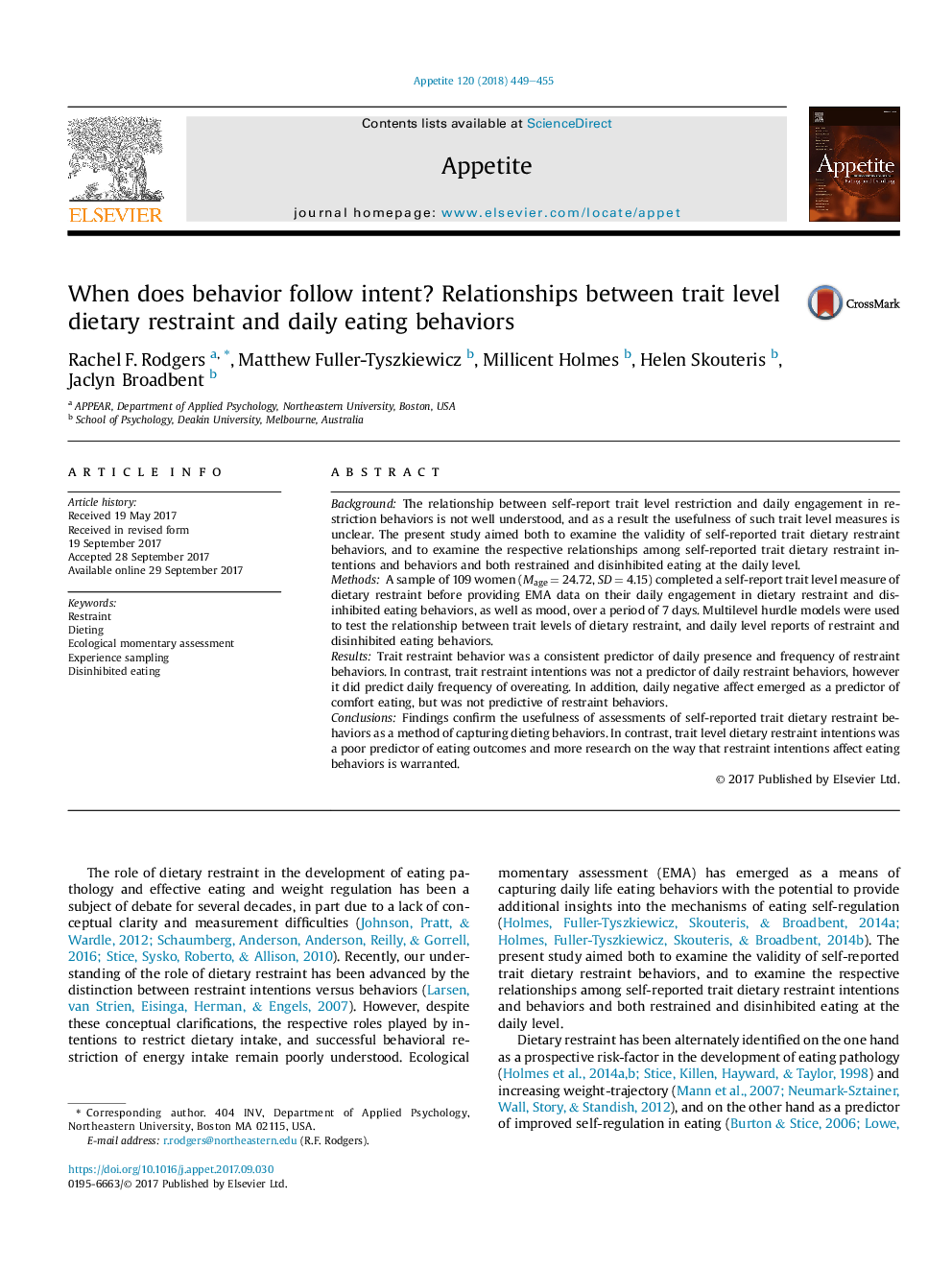| Article ID | Journal | Published Year | Pages | File Type |
|---|---|---|---|---|
| 5043957 | Appetite | 2018 | 7 Pages |
BackgroundThe relationship between self-report trait level restriction and daily engagement in restriction behaviors is not well understood, and as a result the usefulness of such trait level measures is unclear. The present study aimed both to examine the validity of self-reported trait dietary restraint behaviors, and to examine the respective relationships among self-reported trait dietary restraint intentions and behaviors and both restrained and disinhibited eating at the daily level.MethodsA sample of 109 women (Mage = 24.72, SD = 4.15) completed a self-report trait level measure of dietary restraint before providing EMA data on their daily engagement in dietary restraint and disinhibited eating behaviors, as well as mood, over a period of 7 days. Multilevel hurdle models were used to test the relationship between trait levels of dietary restraint, and daily level reports of restraint and disinhibited eating behaviors.ResultsTrait restraint behavior was a consistent predictor of daily presence and frequency of restraint behaviors. In contrast, trait restraint intentions was not a predictor of daily restraint behaviors, however it did predict daily frequency of overeating. In addition, daily negative affect emerged as a predictor of comfort eating, but was not predictive of restraint behaviors.ConclusionsFindings confirm the usefulness of assessments of self-reported trait dietary restraint behaviors as a method of capturing dieting behaviors. In contrast, trait level dietary restraint intentions was a poor predictor of eating outcomes and more research on the way that restraint intentions affect eating behaviors is warranted.
